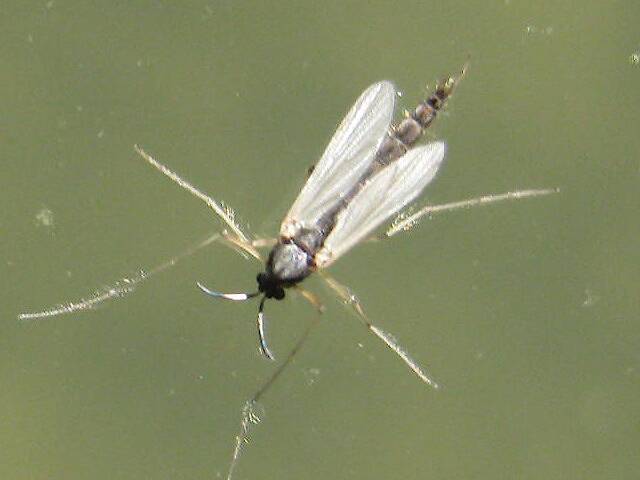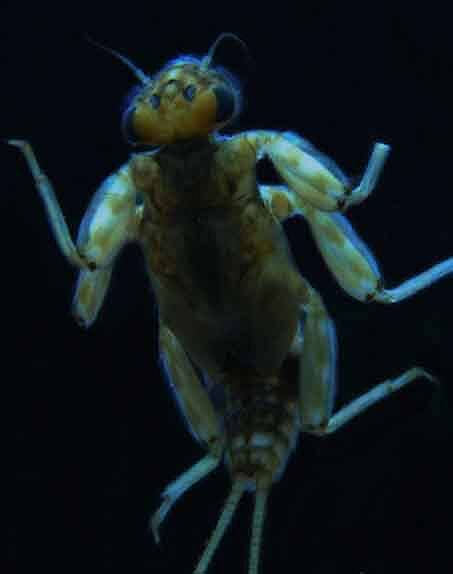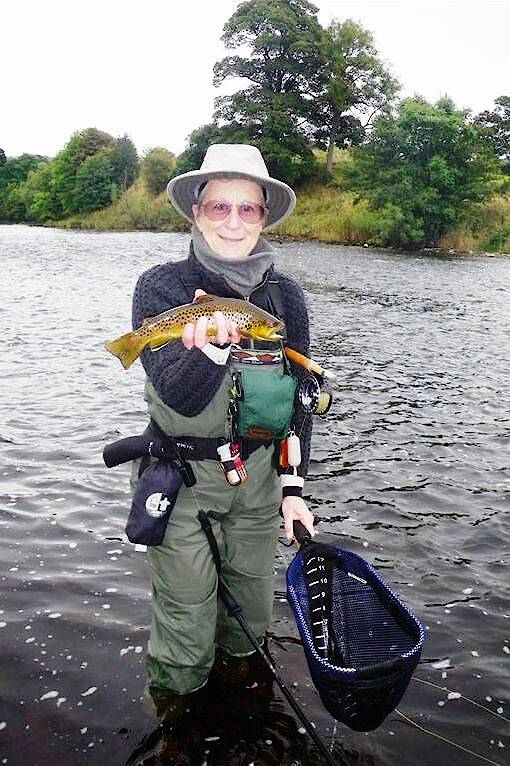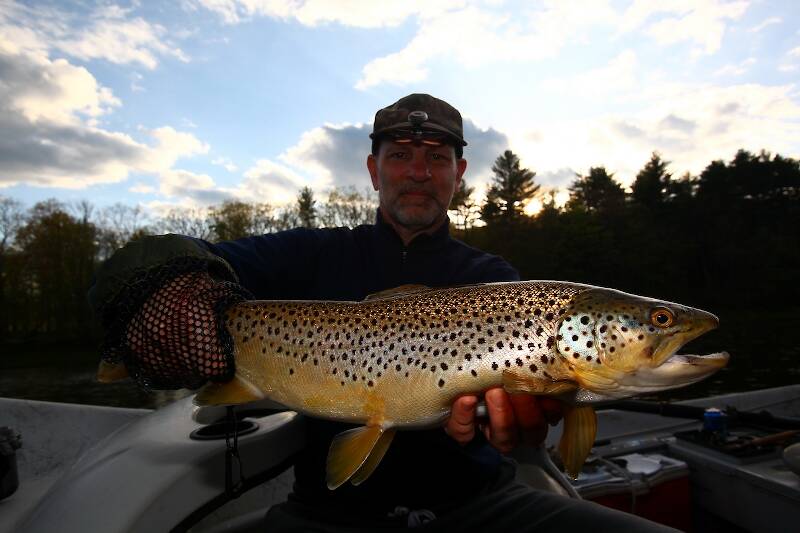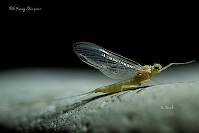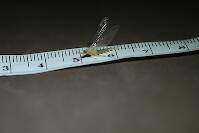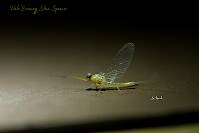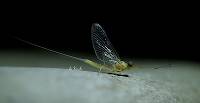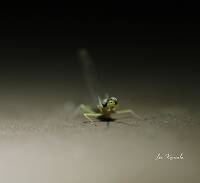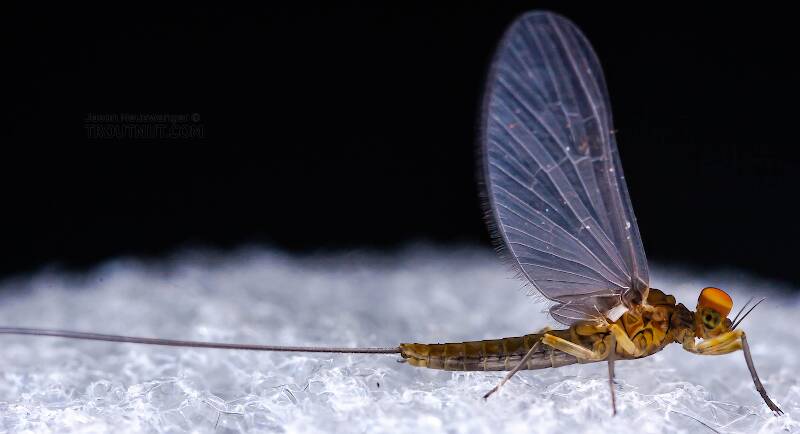
Blue-winged Olives
Baetis
Tiny Baetis mayflies are perhaps the most commonly encountered and imitated by anglers on all American trout streams due to their great abundance, widespread distribution, and trout-friendly emergence habits.
Featured on the forum
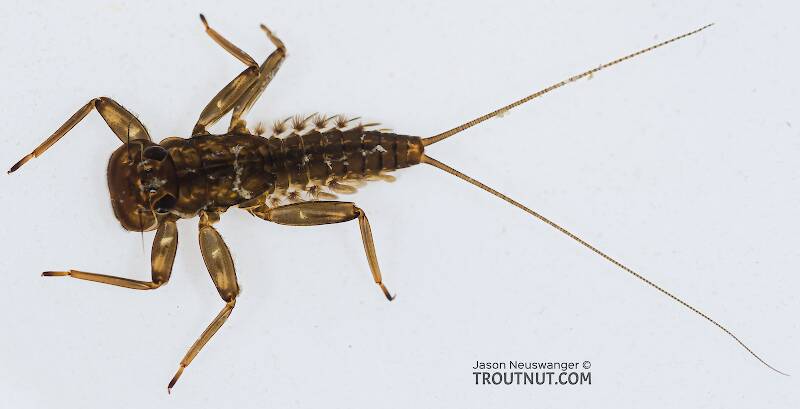
This specimen keys to the Epeorus albertae group of species. Of the five species in that group, the two known in Washington state are Epeorus albertae and Epeorus dulciana. Of the two, albertae has been collected in vastly more locations in Washington than dulciana, suggesting it is far more common. On that basis alone I'm tentatively putting this nymph in albertae, with the large caveat that there's no real information to rule out dulciana.

Troutnut is a project started in 2003 by salmonid ecologist Jason "Troutnut" Neuswanger to help anglers and
fly tyers unabashedly embrace the entomological side of the sport. Learn more about Troutnut or
support the project for an enhanced experience here.
Falsifly on Apr 6, 2009April 6th, 2009, 3:44 pm EDT
Falsifly
When asked what I just caught that monster on I showed him. He put on his magnifiers and said, "I can't believe they can see that."
When asked what I just caught that monster on I showed him. He put on his magnifiers and said, "I can't believe they can see that."
Troutnut on Apr 6, 2009April 6th, 2009, 7:40 pm EDT
It's not in there! But there sure is a lot there for a thing with no it there.
Jason Neuswanger, Ph.D.
Troutnut and salmonid ecologist
Troutnut and salmonid ecologist
GONZO on Apr 6, 2009April 6th, 2009, 10:06 pm EDT
Itless Exuvium
Although it's rather hard to tell,
This seems to be an empty shell.
And judging from the vacant stare,
I think that it is not in there.
There seems to be a dorsal cleft,
And so I'd say that it has left.
Although it's rather hard to tell,
This seems to be an empty shell.
And judging from the vacant stare,
I think that it is not in there.
There seems to be a dorsal cleft,
And so I'd say that it has left.
Taxon on Apr 6, 2009April 6th, 2009, 10:30 pm EDT
Oh, now I get it.
GONZO on Apr 6, 2009April 6th, 2009, 10:57 pm EDT
Roger,
"It" happens! In this "case"--as Bill Clinton might say--it depends on what the definition of "it" is. ;)
"It" happens! In this "case"--as Bill Clinton might say--it depends on what the definition of "it" is. ;)
Taxon on Apr 6, 2009April 6th, 2009, 11:22 pm EDT
Gonzo-
Thanks.
Thanks.
Konchu on Apr 7, 2009April 7th, 2009, 4:57 am EDT
If the flight's on, nobody's home.
Falsifly on Apr 7, 2009April 7th, 2009, 5:03 am EDT
Falsifly
When asked what I just caught that monster on I showed him. He put on his magnifiers and said, "I can't believe they can see that."
When asked what I just caught that monster on I showed him. He put on his magnifiers and said, "I can't believe they can see that."
Troutnut on Apr 7, 2009April 7th, 2009, 8:44 am EDT
There once was a nymph from the Nam
who wanted to go on the lam.
He said, "what the hell!"
and shucked off his shell
and -- uh oh -- a trout! Damn!
who wanted to go on the lam.
He said, "what the hell!"
and shucked off his shell
and -- uh oh -- a trout! Damn!
Jason Neuswanger, Ph.D.
Troutnut and salmonid ecologist
Troutnut and salmonid ecologist
Shawnny3 on Apr 7, 2009April 7th, 2009, 9:38 am EDT
A serious question: Do trout feed on shucks?
-Shawn
-Shawn
Jewelry-Quality Artistic Salmon Flies, by Shawn Davis
www.davisflydesigns.com
www.davisflydesigns.com
Troutnut on Apr 7, 2009April 7th, 2009, 10:46 am EDT
Probably not intentionally, but I'm sure they mistake quite a few for "it."
Jason Neuswanger, Ph.D.
Troutnut and salmonid ecologist
Troutnut and salmonid ecologist
Shawnny3 on Apr 8, 2009April 8th, 2009, 6:00 am EDT
I was just thinking that, since many shucks quite similar, a good shuck-imitating fly might be productive during a variety of hatches... if fish feed on them, that is. I presumed what Jason stated, that fish mistakenly take them (can't imagine there's much nutrition in them), but I also wonder if fish learn to avoid them unless they look much like the corresponding nymph.
-Shawn
-Shawn
Jewelry-Quality Artistic Salmon Flies, by Shawn Davis
www.davisflydesigns.com
www.davisflydesigns.com
GONZO on Apr 8, 2009April 8th, 2009, 6:40 am EDT
Shawn,
Although the standard way of imitating shucks on dry mayfly emergers looks much the same (usually just a shapeless clump of synthetic fibers), this is not true of the actual mayfly shucks. To the extent that trout take shucks, it is probably because the shucks so closely resemble the actual nymph. Like stonefly shucks, most mayfly shucks retain most of the shape, appearance, and dark markings of the nymph. The main difference (other than having no "it" there) would be a degree of translucency. That would seem to be a possible way for the trout to distinguish between them rather than something to imitate. In order to be successful, I would think that a "shuck-imitating" fly (one that imitates only the shuck) would look no different than a nymph-imitating fly.
Although the standard way of imitating shucks on dry mayfly emergers looks much the same (usually just a shapeless clump of synthetic fibers), this is not true of the actual mayfly shucks. To the extent that trout take shucks, it is probably because the shucks so closely resemble the actual nymph. Like stonefly shucks, most mayfly shucks retain most of the shape, appearance, and dark markings of the nymph. The main difference (other than having no "it" there) would be a degree of translucency. That would seem to be a possible way for the trout to distinguish between them rather than something to imitate. In order to be successful, I would think that a "shuck-imitating" fly (one that imitates only the shuck) would look no different than a nymph-imitating fly.
Patcrisci on Apr 8, 2009April 8th, 2009, 7:34 am EDT
The Trout's Retort
It was, alas, a fleeting glimpse. I saw
and thought it was a nymph! I tipped my jaw
and took, then sensed at once the empty shuck.
Duped by a voided shell I curse my luck,
yet thankful am I for the lifeless thing.
It's better far than feather, hook and sting.
It was, alas, a fleeting glimpse. I saw
and thought it was a nymph! I tipped my jaw
and took, then sensed at once the empty shuck.
Duped by a voided shell I curse my luck,
yet thankful am I for the lifeless thing.
It's better far than feather, hook and sting.
Pat Crisci
GONZO on Apr 8, 2009April 8th, 2009, 8:00 am EDT
Nice, Pat! (Though I worry that the "Perfesser" might be feeling a haiku coming on, and I wouldn't want him to break the longstanding ban on 575s) :)
CaseyP on Apr 8, 2009April 8th, 2009, 9:30 am EDT
(can't imagine there's much nutrition in them)--Shawnny
'way back in biology class we were told that such things as insect cases were a form of protein that other animals might eat. was that science as accurate as some other pronouncements from that bygone era?
"You can observe a lot by watching." Yogi Berra
GONZO on Apr 8, 2009April 8th, 2009, 9:40 am EDT
I don't know, Casey. But it makes me wonder about the times when I've seen the surface virtually blanketed with nymph shucks after a Hexagenia hatch. I've never seen a fish feeding on them, though the fish might have already been stuffed by gorging on the ones that were full of "it."
Konchu on Apr 8, 2009April 8th, 2009, 10:10 am EDT
at least some fish have chemicals in their digestive tracts that would allow them to process the exuviae, but i dont know if it'd be worth the effort when other high energy foods are there
Shawnny3 on Apr 8, 2009April 8th, 2009, 10:35 am EDT
Casey, I just did a little poking around, and it seems the exoskeletons are made of chitin (probably knew that from biology class at some point, the day before I forgot it), which is a polysaccharide similar to cellulose (the sugar that makes up most of the structural components in plants). I'm guessing that it's impossible for trout to break down to the monosaccharide level and hence has little to no nutritional value to them. In light of Konchu's comment, they probably break it down to some point so that the nutrients inside might be drawn out, but I would highly doubt the exoskeleton itself provides them with much energy.
Lloyd, I know that the shucks look much like the original nymphs in terms of general outline, but I've noticed in my investigations that they are not the same color at all, but instead are essentially black and transparent with a lot of mottling (of course, my investigations are pretty limited - I'm sure not all of them are like that). During a hatch in which the hatching nymphs are of many different colors, it seems that the shuck color might be easier to consistently imitate than the nymph colors. Also, after many of the nymphs have hatched and shucks outnumber nymphs in the water by a large margin, I wonder if the fish might be fooled into thinking a hatch of shucks is going on which dwarfs the actual hatch. A fish so fooled might fall better for a fly with the markings of the shuck than for the real thing - or at least that's my unlikely hypothesis.
What's more likely, of course, is what you suggested, that the markings on the shucks may be triggers that alert the fish that it's fake and the fish might therefore selectively ignore them as a result. But if the fish are simply tuned into the most prolific bug-looking thing floating downstream, then the shuck fly might produce. Even if the fish doesn't actually eat shucks but expels them after mouthing them, that behavior would still be enough for the fisherman to find success. Basically, it comes down to how smart or conditioned fish are in terms of what they decide to put in their mouths. And if they routinely mouth our crude imitations, it's possible that they put lots of food-looking things into their mouths. Though it's a long shot, I'm intrigued enough by the possibility that I might just try to develop a shuck pattern for testing. I would develop and test it in the name of science, of course, lest my wife suspect that my routine abscondings to the stream are for my own personal satisfaction.
-Shawn
Lloyd, I know that the shucks look much like the original nymphs in terms of general outline, but I've noticed in my investigations that they are not the same color at all, but instead are essentially black and transparent with a lot of mottling (of course, my investigations are pretty limited - I'm sure not all of them are like that). During a hatch in which the hatching nymphs are of many different colors, it seems that the shuck color might be easier to consistently imitate than the nymph colors. Also, after many of the nymphs have hatched and shucks outnumber nymphs in the water by a large margin, I wonder if the fish might be fooled into thinking a hatch of shucks is going on which dwarfs the actual hatch. A fish so fooled might fall better for a fly with the markings of the shuck than for the real thing - or at least that's my unlikely hypothesis.
What's more likely, of course, is what you suggested, that the markings on the shucks may be triggers that alert the fish that it's fake and the fish might therefore selectively ignore them as a result. But if the fish are simply tuned into the most prolific bug-looking thing floating downstream, then the shuck fly might produce. Even if the fish doesn't actually eat shucks but expels them after mouthing them, that behavior would still be enough for the fisherman to find success. Basically, it comes down to how smart or conditioned fish are in terms of what they decide to put in their mouths. And if they routinely mouth our crude imitations, it's possible that they put lots of food-looking things into their mouths. Though it's a long shot, I'm intrigued enough by the possibility that I might just try to develop a shuck pattern for testing. I would develop and test it in the name of science, of course, lest my wife suspect that my routine abscondings to the stream are for my own personal satisfaction.
-Shawn
Jewelry-Quality Artistic Salmon Flies, by Shawn Davis
www.davisflydesigns.com
www.davisflydesigns.com
Martinlf on Apr 8, 2009April 8th, 2009, 11:16 am EDT
Gonzo, you're right. I'm just in the middle of a lot of academic busy work, and only have time for a peek at the board from time to time, but I was contemplating a little civil disobedience the last time I glanced at this thread.
"He spread them a yard and a half. 'And every one that got away is this big.'"
--Fred Chappell
--Fred Chappell
Quick Reply
Related Discussions
Topic
Replies
Last Reply
0
Aug 12, 2012
by Hdhungryman
by Hdhungryman
1
Mar 9, 2012
by Wiflyfisher
by Wiflyfisher
5
Sep 10, 2020
by Leskorcala
by Leskorcala


